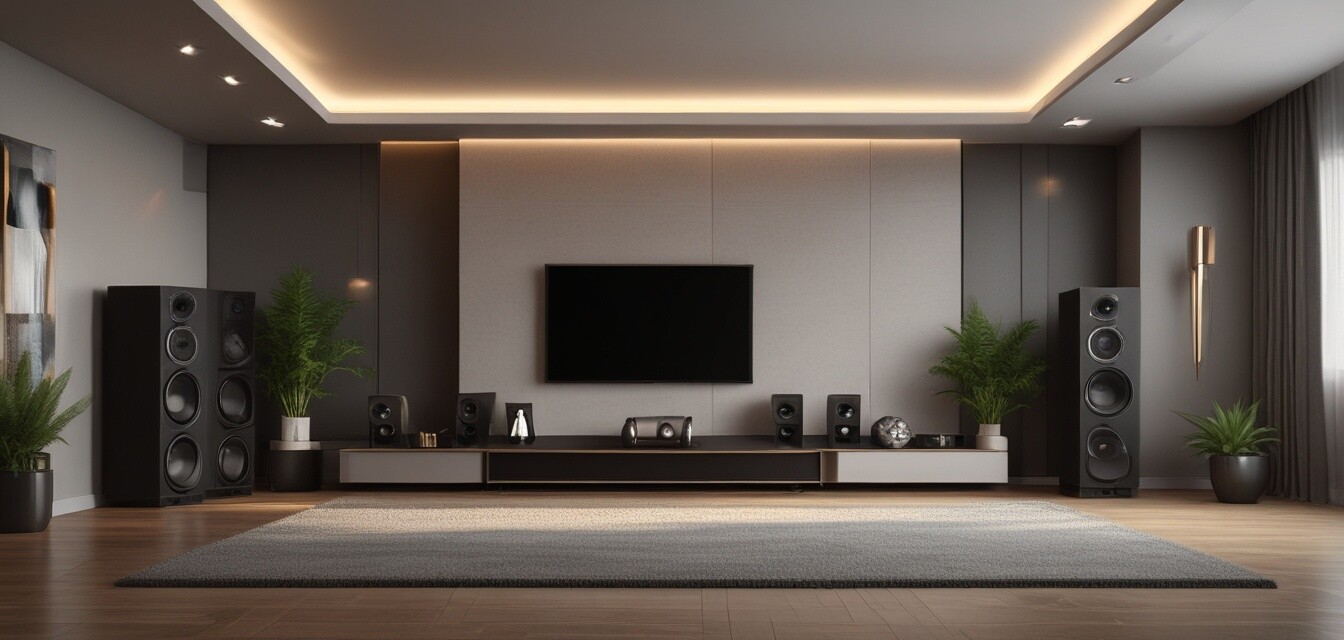
How to Properly Position Your Home Theater Speakers
Key Takeaways
- Speaker positioning is essential for achieving optimal sound quality.
- Consider room size, speaker type, and intended use for better layout.
- Surround sound setups typically require specific placements for immersive experience.
- Use sound reflection and absorption techniques for acoustic balance.
Setting up your home theater speakers correctly can significantly enhance your audio experience. A well-planned speaker layout not only brings your movies and music to life but also ensures that every high and low note is delivered with precision. In this guide, we will walk you through the best techniques for positioning your home theater speakers, enabling you to enjoy a more cinematic sound.
Understanding the Basics of Speaker Placement
Before diving into placement techniques, it's important to understand some foundational concepts regarding speaker types and their characteristics. Different speakers serve specific purposes in a home theater setup.
| Speaker Type | Purpose | Typical Placement |
|---|---|---|
| Front Speakers | Provide main audio output | On either side of the TV, angled towards the seating area |
| Center Speaker | Delivers dialogue clarity | Above or below the TV, centered |
| Surround Speakers | Creates immersive audio | To the side or behind the viewing area, slightly elevated |
| Subwoofer | Handles low-frequency sounds | In a corner or against a wall for better bass response |
Key Placement Techniques
To create an optimal audio environment, consider the following guidelines for speaker placement:
1. Distance from Walls
Speakers should be positioned a certain distance from walls to enhance sound quality:
- Front speakers: 1-2 feet from the wall.
- Surround speakers: 6-12 inches away from the side walls.
- Subwoofer: Can be placed against the wall but experiment to find the best spot for bass response.
2. Angle and Orientation
Directing the speakers towards the centroid of your seating area can vastly improve audio clarity:
- Front speakers should form a slight angle towards the listening area.
- Surround speakers should be slightly elevated and angled downwards.
3. Height Considerations
Speaker height is crucial in delivering the best sound experience:
- Center speaker should be at ear level when seated.
- Surround speakers should be approximately 2 feet above ear level.
- Subwoofers can be placed on the floor, as their sound waves travel differently.
Common Mistakes to Avoid
While setting up, it's easy to make mistakes that can diminish sound quality:
- Avoid placing speakers directly in corners, which can distort sound.
- Do not assume that all rooms will benefit from the same speaker layout.
- Ignoring furniture placement can block sound waves.
Testing and Tweaking Your Setup
Once your speakers are positioned, it’s time to fine-tune:
- Test sound quality from multiple positions in the room.
- Utilize sound measurement apps to check acoustics.
- Adjust speaker positions based on listening tests until you find the sweet spot.
Using Acoustic Treatments
For advanced setups, consider using acoustic panels and soundproofing techniques to optimize sound performance. This is especially useful in larger rooms:
- Place acoustic panels at reflection points.
- Utilize rugs or carpets to absorb sound and minimize echo.
Conclusion
Properly positioning your home theater speakers is vital for unlocking the full potential of your audio setup. By taking into account room layout, speaker distances, angles, and height, you can transform your audio experience. Don't forget to test out different configurations and make adjustments to find what works best for you. For more tips on enhancing your sound system, check out our Buying Guides.
Pros
- Enhances audio clarity.
- Creates a more immersive experience.
- Optimizes sound across the room.
Cons
- Time-consuming to find the perfect setup.
- Potential for echoes or sound distortion if not done correctly.
- Can be costly if purchasing acoustic treatments.